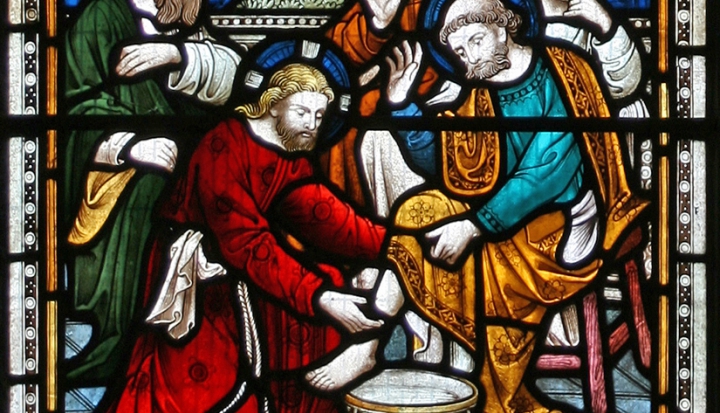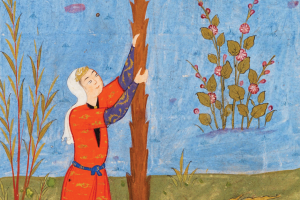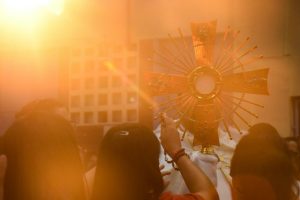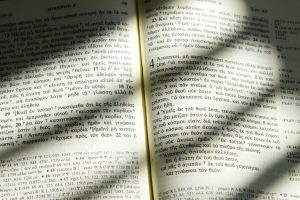We kick off the Easter Triduum with a tradition that helps to keep our faith sure-footed.
When the church gathers on the night of Holy Thursday, its business is to leave the 40 days of Lent and enter the Triduum, the three days at the heart of the Catholic community’s life. So whether Lent has been strenuous or a disaster, we leave it behind on this Thursday evening. Ready or not, we begin the Triduum.
What gets us in? The gathered church does something this night it doesn’t do all the rest of the year. Perhaps that tells us: Pay attention. Here is the way we enter. We’re going into our three holiest days by taking off shoes and stockings and using soap and water and towels. We’re getting ready to proclaim the victory of life over death, getting ready to take the catechumens to the font and plunge them in, by touching each other’s feet. Sounds weird.
Sometimes it is very weird. In my experience, the washing of feet on Holy Thursday has usually failed completely to do its job. We tell the story that night from John’s gospel. What did Jesus do before he died? Take bread and wine and say words about body and blood?
Not the way John tells it. In John’s gospel Jesus washed everybody’s feet that night, and he talked a lot. One of the things he said: “For I have set you an example, that you also should do as I have done to you” (13:15).
Here was this very practical and lovely thing to do for a guest, this expression of service and care and just plain comfort and hygiene. Jesus denied none of that, but he added: “Whether you get all the parables and beatitudes and so on or not, here’s what it all comes down to. I’m going to wash your feet. You do likewise.”
But what I have seen so often isn’t this at all. It is a little playacting of the gospel story, often with great care to keep the actual bare feet (sometimes just one foot per person) and the actual water well out of sight, easily done as the washees sit facing the assembly and the washers (the priest and his helpers) make a little moving cluster going from one washee to the next as fast as possible. The priest is Jesus, the others are disciples. The rest of us are an audience, spectators. From this mentality (and maybe from a few notions of ritual purity) comes the vigilance of some to keep any female feet fully shoed and socked—and all of them in the audience.
But I have seen far more from Holy Thursday’s washing of the feet, and it has shaped me. I have been part of assemblies where it took an hour or more. At half a dozen places scattered around the whole room, people came barefoot and someone would wash their feet. Then each whose feet had been washed could choose to kneel down and wash the feet of another.
Here is an old woman washing the feet of a child (the old woman really knows how!). Here is a child washing the feet of a teenager. Here is the teenager washing the feet of another teenager who is always there and always in a wheelchair. Here is a man in a suit whose feet are being washed by a man in a suit. Why not?
Everything we bring with us of the world, what we think of as “ourselves,” breaks down here.
There is a different order taking root in us. And it is sealed with a kiss, but not the kiss of peace only.
South African author Alan Paton captures it well when he describes in his novel Cry, the Beloved Country (Scribner) a white South African judge washing the feet of an African woman who has served his family: “Then he took both her feet in his hands with gentleness, for they were no doubt tired with much serving, and he kissed both of them.”
That is how I have been helped to enter the Triduum. Now we are ready to fast and to vigil, to walk the way of the cross, to listen to the Passion and kiss the cross, to wait until the dark of Saturday night, to gather around the fire and hear the scriptures, and finally to approach the font and go together to the table.
This article appeared in the April 2009 issue of U.S. Catholic (Vol. 74, No. 4, page 37).
Image credit: Flickr photo cc by The Rev Steve













Add comment